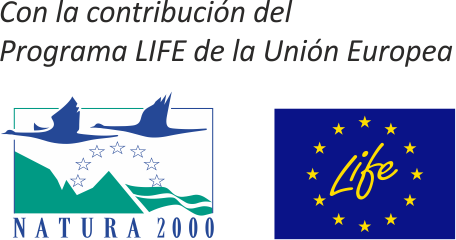The objective of this action is to hold an International Congress on the conservation of the lesser kestrel, during which all key aspects of the biology, status and conservation projects for the species across its whole distribution will be covered. The preliminary results obtained in this LIFE project be presented and the experiences of other LIFE projects that have been or are being developed will be shared. At the same time, other conservation and research projects that are considered of interest in addressing conservation challenges that are like those in this LIFE project may participate.
Through an international event which is open to a diverse audience, the Congress will contribute to enhance the transferability and dissemination of the results of the project, and will be enriched too with the input from other experiences.
The invited speakers and the general contents of the Congress will be established under the advice of the Scientific Committee (action F2), prioritising the participation of LIFE projects, especially the most recent with the most interesting results and innovative action lines in the conservation of the species.
The contents will be structured and grouped considering the following themes:
- Census methodology.
- Population status of the species
- Marking and tracking.
- Management and problems facing rural and urban breeding colonies.
- Improvement of habitat, habitat use and feeding.
- Ex-situ conservation projects
- Strengthening populations and reintroduction.
- Importance of urban SPAs in meeting the objectives of the Natura 2000 network.
- Birdwatching tourism as a conservation tool.
- Environmental education and awareness raising.
The Congress will last several days. Each session will start with a keynote speech followed by talks related to each theme and, when appropriate, short communications. To ensure that the Congress will have wide public appeal, it is planned in the following way:
1º Day: The contents will be centred on the actions developed in the LIFE project in Extremadura, their results and follow up. It will be mainly aimed at technicians from the government sector, environment agents, those working in local development, managers and owners of buildings, tourism sector and other project collaborators.
2º and 3º Days: The contents will focus on the general aspects of the species at both national and international level and the general results obtained in this LIFE project. In this case, it is addressed to a wider public, both scientific and professional.
4º Day: This will include a visit to an urban SPA to see the most noteworthy activities related to the LIFE Project.
It is proposed that speakers invited to the Congress will be representatives of LIFE projects that have worked directly with the species from Greece, Bulgaria, Italy, France and Castilla-León.
Also, those involved in the Lesser Kestrel Action Plan will be invited as well as representatives from the Ministry of Agriculture, Fisheries, Food and the Environment, from autonomous communities, research centres such as the University of Extremadura, Higher Centre of Scientific Research (CSIC) and national and regional NGOs. It is expected that about six international, 15 national and 10 regionals will be invited.
The criteria and timing for submission of poster presentations and communications for the Congress will be established, and they will be evaluated by the Organisation Committee for the event. The procedures for free inscriptions for the event until the capacity has been reached will be also established
The results of the Congress will be published, including the summaries of the talks and the communications received. This publication will also include the overall conclusions, validated by the Scientific Committee, which are considered of greatest interest for defining the current status of the species, its threats and the measures to ensure its future conservation. The publication will be available in print format and on line on the project website to ensure maximum visibility.
Responsible for Implementation: General Directorate of the Environment.

